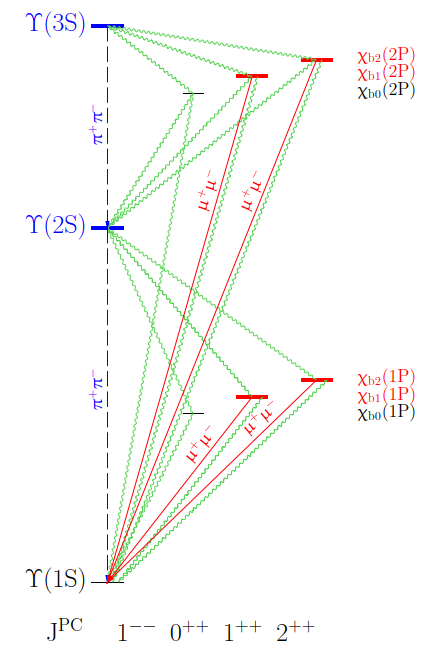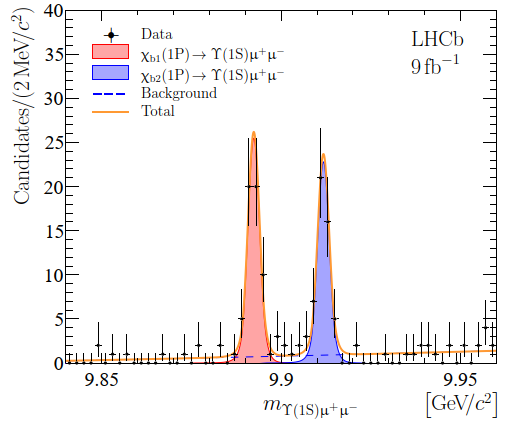The LHCb collaboration submitted today a paper reporting precise measurements of the mass values and splittings of the hidden-beauty particles that exist within the bb quark bound system called bottomonium. The first observation of the so-called muonic Dalitz decays of the χb1(1P), χb2(1P), χb1(2P) and χb2(2P) mesons to the Υ(1S) was an essential part of this measurement.
The lower left image shows the different energy levels of the bb quark bound system relevant for this analysis, as well as the transitions between them. Radiative transitions between different JPC levels have been intensively studied in the past by various experiments and are indicated by thin wavy green lines. LHCb published today a paper with dramatic improvement by measuring, for the first time ever, the muonic Dalitz decays from the χb levels to the Υ(1S) shown as red arrows in the image. By measuring the μ+μ– pair, a higher precision and better control of systematic uncertainties could be achieved compared to studies with radiative decays. These decays are the beauty partners of the χc→J/ψμ+μ– decays observed by LHCb in 2017. As the Υ→μ+μ– decay is used in this analysis, the 4μ final state is studied, in analogy to the J/ψ→μ+μ–μ+μ– decay. The dipion transitions Υ(3S)→Υ(2S)π+π– and Υ(2S)→Υ(1S)π+π–, indicated in blue, are used to obtain the most precise measurements of Υ(2S) and Υ(3S) masses.


The top right image shows the mass of the μ+μ– pair accumulated around the masses of the three Υ mesons 1S, 2S and 3S. The bottom left image shows the mass of the Υ combined with the μ+μ– pair in the χb(1P) mass region and the bottom right image in the χb(2P) mass region.

The reported precision measurements of the masses and mass difference between different bb energy levels forming the bottonium system are competitive and in agreement with the world averages. They significantly improve the knowledge of several parameters with different systematic uncertainties with respect to measurements at e+e– colliders. The full data set of Run I and Run II has been used. The results will further be improved with the larger dataset being collected with the upgraded detector.
Read more in the LHCb publication, which presents all the numerical values and compares them with those from other experiments.

